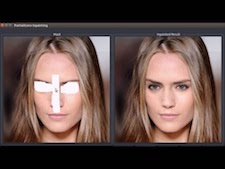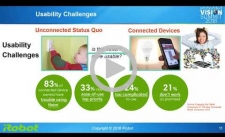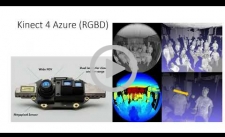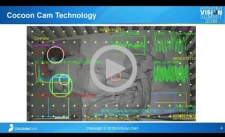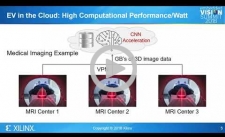| LETTER FROM THE EDITOR |
|
On March 27, 2019 at 11 am ET (8 am PT), Jeff Bier, founder of the Embedded Vision Alliance, will deliver a free hour-long webinar, "Embedded Vision: The Four Key Trends Driving the Proliferation of Visual Perception," in partnership with Vision Systems Design. Bier will examine the four most important trends that are fueling the proliferation of vision applications and influencing the future of the visual AI industry. For more information, including online registration, please visit the event page. For more than 20 years, Vision Systems Design has provided in-depth technical and integration insights focused exclusively on the information needs of machine vision and imaging professionals. Sign up today for a free subscription to stay up to date. The Embedded Vision Summit attracts a global audience of over one thousand product creators, entrepreneurs and business decision-makers who are developing and using computer vision technology. The Embedded Vision Summit has experienced exciting growth over the last few years, with 97% of 2018 Summit attendees reporting that they'd recommend the event to a colleague. The next Summit will take place May 20-23, 2019 in Santa Clara, California, and online registration is now available. The Summit is the place to learn about the latest applications, techniques, technologies, and opportunities in visual AI and deep learning. In 2019, the event will feature new, deeper and more technical sessions, with more than 90 expert presenters in 4 conference tracks (we're delighted to announce the first round of accepted speakers and talks, with more to follow soon) and 100+ demonstrations in the Technology Showcase. Two hands-on trainings, the updated Deep Learning for Computer Vision with TensorFlow 2.0 and brand new Computer Vision Applications in OpenCV, will run concurrently on the first day of the Summit, May 20. And the last day of the Summit, May 23, will again feature the popular vision technology workshops from Intel (both introductory and advanced), Khronos and Synopsys. Register today using promotion code EARLYBIRDNL19 to save 15% with our limited-time Early Bird Discount rate. Even as Moore's Law winds down, the processor industry continues to thrive. In the data center, next-generation server processors are now supplemented with a variety of accelerators to offload networking, storage, and deep-learning tasks. Deep learning is also a key technology in the development of ADAS and autonomous-driving systems and is moving into IoT and embedded systems. Networking equipment is evolving to SDN, NFV, 5G, and other new technologies. And the Internet of Things is quietly gaining traction in both industrial and consumer products. New processor chips and IP cores, along with memory and networking chips, are emerging to support these new applications. The Linley Spring Processor Conference will explore these and other hot topics; attendees will also have the opportunity to meet with industry leaders and The Linley Group analysts, network with peers, attend an evening reception with sponsor exhibits, demos, and more. Admission is free to qualified registrants who sign up online by April 4. Join fellow engineering professionals already registered for an inspiring day of education! For more information and to register, see the event page. Brian Dipert |
| COMPUTER VISION FOR AUTONOMOUS ENVIRONMENTS |
|
|
| CLOUD AND EDGE VISION PROCESSING |
|
|
| UPCOMING INDUSTRY EVENTS |
|
Vision Systems Design Webinar – Embedded Vision: The Four Key Trends Driving the Proliferation of Visual Perception: March 27, 2019, 11 am ET Embedded Vision Summit: May 20-23, 2019, Santa Clara, California
|
| FEATURED NEWS |
|
|


